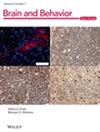Association Between Handgrip Strength and Suicidal Ideation: A Systematic Review and Meta-Analysis
Abstract
Background
Suicidal ideation is a global public health concern, highlighting the need to identify modifiable risk factors. Handgrip strength (HGS), an objective measure of muscular strength, has been linked to mental health outcomes. This review synthesizes evidence on HGS and suicidal ideation, exploring modifiers such as sex.
Methods
This systematic review and meta-analysis, registered with PROSPERO and conducted in accordance with PRISMA guidelines, evaluated data retrieved from PubMed, Embase, and Web of Science up to November 30, 2024. The analysis focused on randomized controlled trials and observational studies—including case-control, cohort, and cross-sectional designs—that examined the relationship between HGS and suicidal ideation in human populations. A random-effects model was employed to calculate pooled odds ratios (ORs) with 95% confidence intervals (CIs). Heterogeneity among studies was assessed using the I2 statistic.
Results
Out of 294 studies, 9 met the inclusion criteria for the systematic review, and 6 were eligible for meta-analysis, involving 81,035 participants. The pooled analysis showed a nonsignificant association between HGS and suicidal ideation. For males, the pooled OR per 1 kg increase in HGS was 0.939 (95% CI, 0.875–1.009), and for females, it was 0.851 (95% CI, 0.662–1.094), indicating a potential but nonsignificant protective effect.
Conclusion
This systematic review and meta-analysis found no statistically significant association between handgrip strength and suicidal ideation in the pooled analysis. However, consistent trends observed in the qualitative synthesis suggest a potential relationship that warrants further investigation. Longitudinal studies are essential to elucidate the underlying mechanisms.


 求助内容:
求助内容: 应助结果提醒方式:
应助结果提醒方式:


